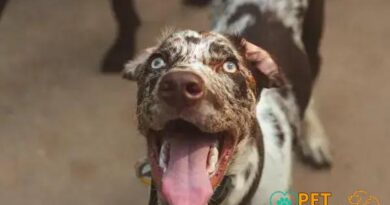What is instinctive behaviors in dogs
What is Instinctive Behaviors in Dogs?
Instinctive behaviors in dogs refer to the innate actions and reactions that are hardwired into a dog’s genetic makeup. These behaviors are not learned but are instead natural responses to various stimuli in their environment. Understanding these instinctive behaviors is crucial for dog owners, as it helps in fostering a better relationship with their pets and addressing any behavioral issues that may arise.
The Role of Genetics in Instinctive Behaviors
Genetics play a significant role in shaping instinctive behaviors in dogs. Different breeds have been selectively bred for specific traits and functions, which influence their instincts. For example, herding breeds like Border Collies exhibit strong herding instincts, while hunting breeds like Beagles have a natural inclination to track scents. Recognizing these genetic predispositions can aid owners in providing appropriate activities and training for their dogs.
Common Instinctive Behaviors in Dogs
Some common instinctive behaviors in dogs include digging, barking, chewing, and chasing. Digging can be a way for dogs to create a comfortable space or to explore their surroundings. Barking serves as a form of communication, alerting owners to potential dangers or expressing excitement. Chewing is often a natural behavior that helps dogs relieve stress or boredom, while chasing is a predatory instinct that can manifest during playtime or walks.
Understanding Social Instincts
Dogs are inherently social animals, and their instinctive behaviors often reflect their need for social interaction. Pack mentality drives many of their actions, such as following their owners or other dogs closely. This social instinct is vital for their emotional well-being, as dogs thrive on companionship and can experience anxiety when left alone for extended periods.
Instinctive Behaviors and Training
While instinctive behaviors are natural, they can sometimes lead to challenges in training. For instance, a dog’s instinct to chase can result in them running off after small animals. Understanding these instincts allows owners to implement training techniques that redirect these behaviors positively. Positive reinforcement can be particularly effective in teaching dogs to manage their instincts in a controlled manner.
Environmental Influences on Instinctive Behaviors
The environment plays a crucial role in shaping how instinctive behaviors manifest in dogs. Factors such as living conditions, socialization experiences, and exposure to various stimuli can enhance or suppress certain instincts. For example, a dog raised in a stimulating environment with plenty of social interactions may exhibit more balanced behaviors compared to one that is isolated or lacks mental stimulation.
Instinctive Behaviors in Puppies
Puppies display instinctive behaviors from a young age, which are essential for their development. Play fighting, for instance, is a natural behavior that helps them learn social skills and boundaries. Observing these behaviors in puppies can provide insights into their personality and future behavioral tendencies, allowing owners to tailor their training and socialization efforts accordingly.
Addressing Problematic Instinctive Behaviors
Some instinctive behaviors can become problematic if not managed properly. Excessive barking, for example, can be a sign of anxiety or boredom. Identifying the root cause of such behaviors is essential for effective intervention. Owners may need to consult with professional trainers or behaviorists to develop strategies that address these issues while respecting the dog’s natural instincts.
The Importance of Enrichment
Providing mental and physical enrichment is vital for fulfilling a dog’s instinctive needs. Activities such as puzzle toys, agility training, and interactive play can help channel their instincts positively. By engaging dogs in activities that stimulate their minds and bodies, owners can reduce the likelihood of undesirable behaviors stemming from boredom or unfulfilled instincts.
Conclusion: Embracing Instinctive Behaviors
Understanding and embracing instinctive behaviors in dogs is essential for creating a harmonious relationship between pets and their owners. By recognizing the natural instincts that drive their dogs’ actions, owners can provide appropriate outlets for these behaviors, ensuring their pets lead happy and fulfilling lives. This knowledge not only enhances training efforts but also strengthens the bond between dogs and their human companions.



